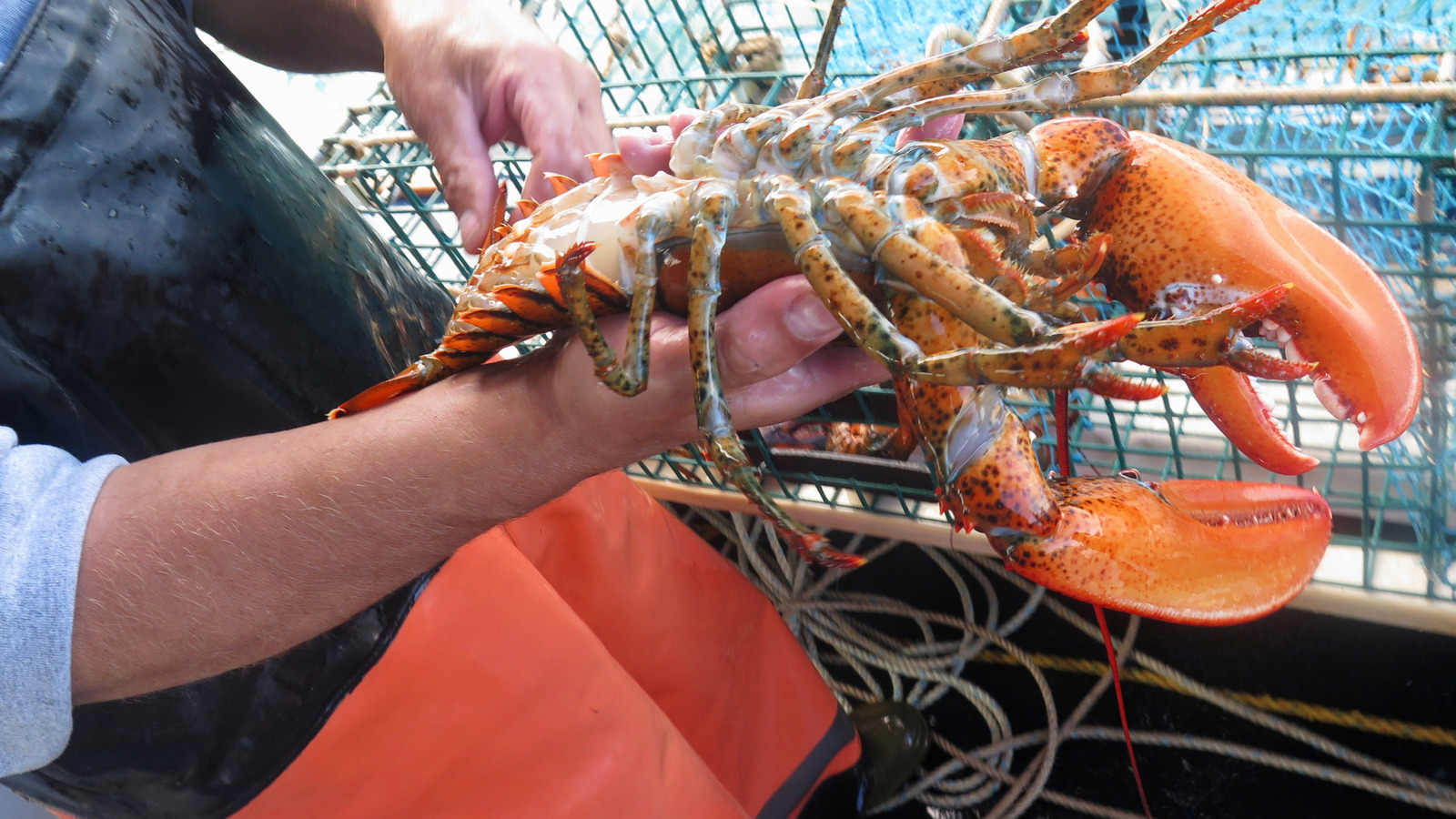
"Orange lobsters are a rare 1 in 30 million sight, according to the New York Aquarium, the product of a genetic mutation that affects shell pigmentation. Typically, the lobster's signature crimson hue is the result of specific proteins in its shell. When a certain genetic mutation occurs that causes a lack of proteins, fewer of these pigment-producing agents bond, and the result is an orange-hued shell."
"This bright orange color is even more remarkable considering that, in the wild, lobsters are typically a dark blue-yellow-brown hue, not turning scarlet red until after they are cooked. Further compounding their rarity is the fact that lobsters are an aggressive, territorial, and cannibalistic species. While ruddier hues allow most lobsters to blend in with their undersea environment, orange-shelled "sea bugs" stand out and might be the subject of increased targeting."
Orange lobsters occur roughly once in 30 million and result from a genetic mutation that alters shell pigmentation by reducing specific pigment-producing proteins. Normally, lobsters display dark blue-yellow-brown hues in the wild and only turn red after cooking, so the orange coloration is conspicuous. Lobsters are aggressive, territorial, and cannibalistic, so brighter orange individuals may face higher targeting by conspecifics or predators. In 2024, an orange female named "Peaches" produced 100 larvae, about half orange, prompting researchers to analyze gene expression across larval stages to identify causative genes and potential heritability.
Read at Tasting Table
Unable to calculate read time
Collection
[
|
...
]